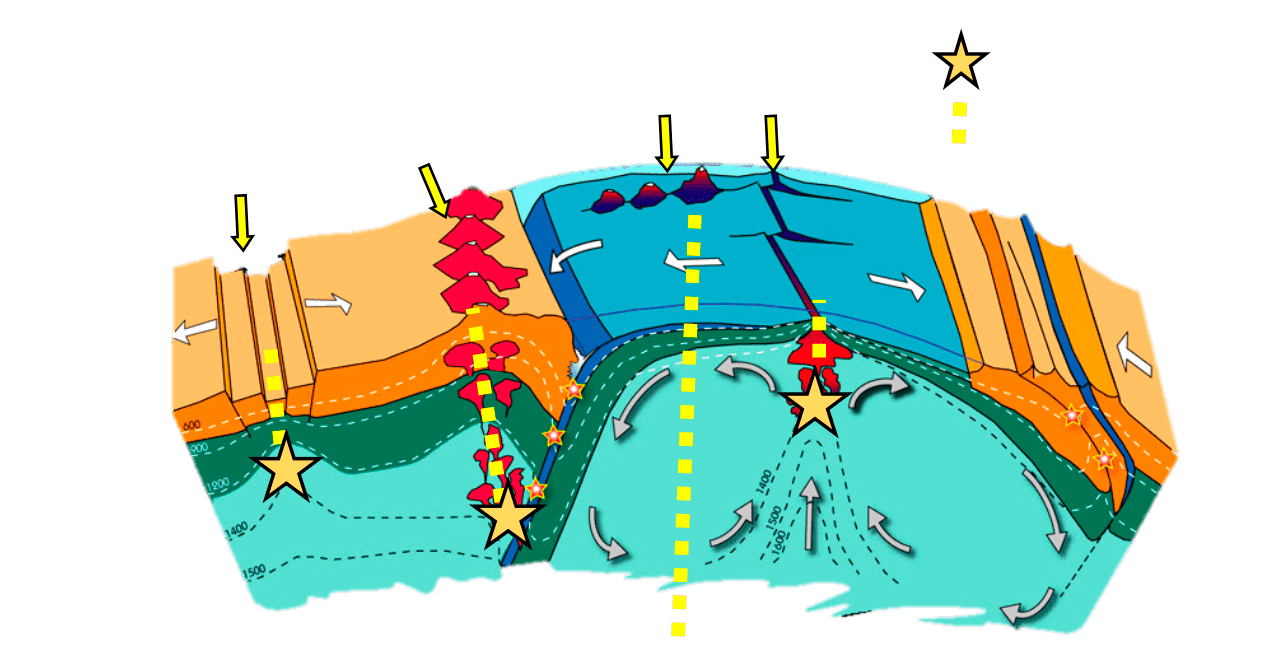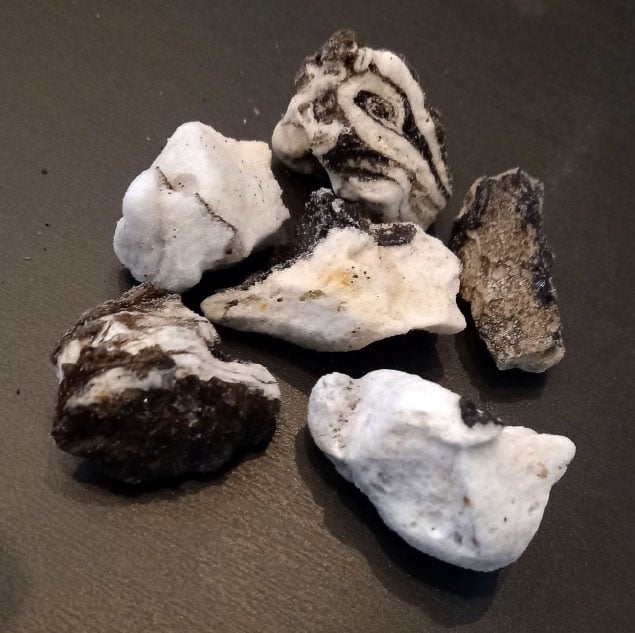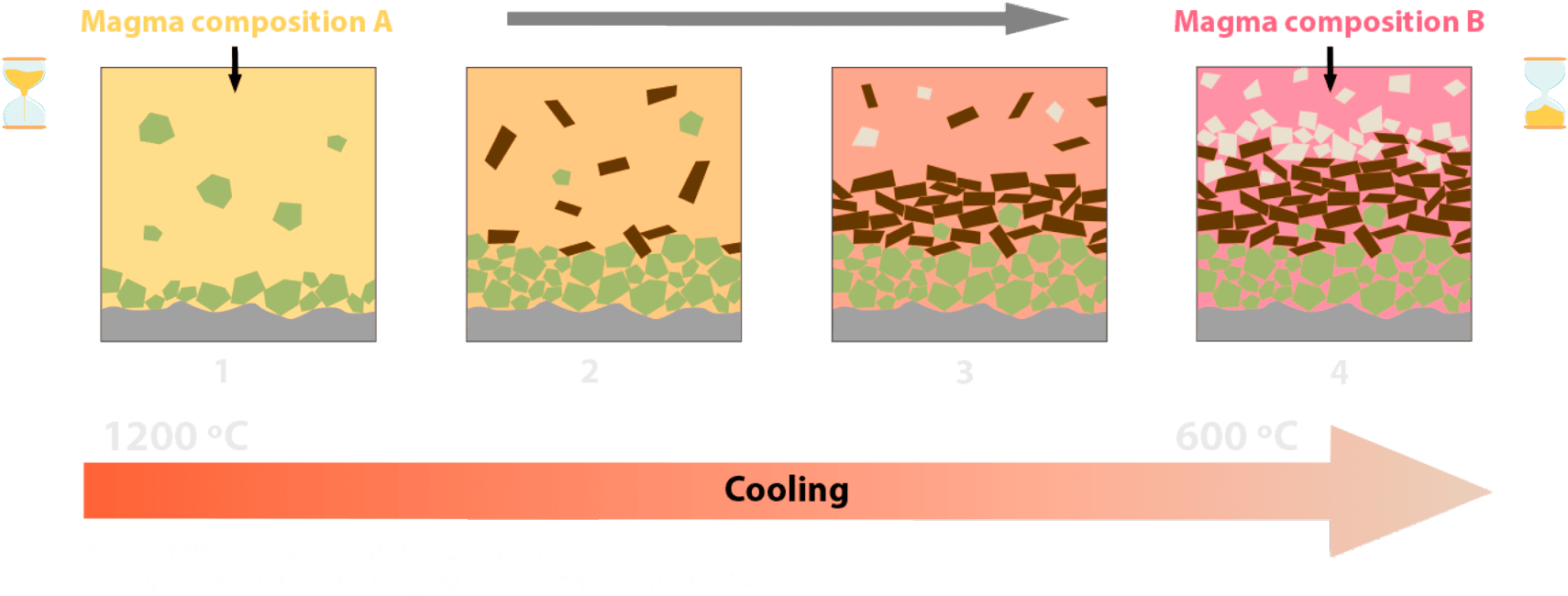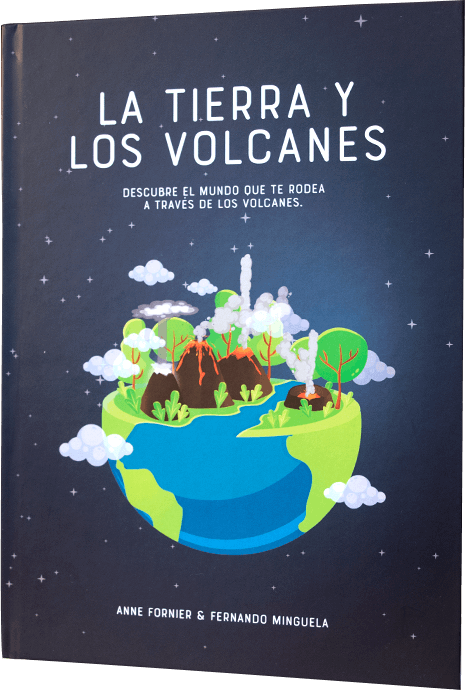The first cause of the variety of volcanoes encountered on Earth is the different sources of the magmas.
In a subduction zone or in a hot spot, the rock involved in the magmatic process is different: continental crust, oceanic crust, sediments, etc. In addition, magma produced beneath a continental crust must also travel a greater distance inside the crust and can “contaminate” itself by incorporating small amounts of rock along the way to the surface. Therefore, the magma contains more or less gas and different elements that will produce different types of volcanoes.
These fragments of pumice from El Hierro (Spain) show the contamination of a basaltic magma (in black) by marine sediments (in white). The magma melted the sediments when passing through, and they mixed together (contamination).
Photo : S. Barde-Cabusson
That’s not all ! On a single volcano, eruptions are sometimes hundreds of years apart…Meanwhile, what’s going on in the magma chamber? The magma undergoes transformations.
Three main mechanisms come into play:
- Contamination by the rock surrounding the magma chamber (black arrows)
- The injection of new magma from depth (orange arrow)
- Fractional crystallization: the crystallization of minerals removes certain chemical elements rather than others, from the melt.
The composition of the magma therefore changes progressively and eruptions occurring at different times will have a different compositions. This can cause more or less violent volcanism.
We don’t really know what a magma chamber looks like! Geophysical imaging and ancient magmatic reservoirs uncovered by erosion, provide some insights, but no method is precise enough to visualize them in detail. Did you know? Now you do!
Learn more about fractional crystallization: in a magma chamber, if there is no injection of new magma from depth, the temperature gradually decreases. The magma then begins to crystallize: as each mineral crystallizes at a particular temperature, they form progressively in this order: 1: olivine; 2: olivine and pyroxene; 3: pyroxene and plagioclase; 4: plagioclase.
These minerals, heavier than the magma itself, gradually sink to the bottom of the magma chamber, forming a so-called cumulate rock. At each stage, the magma is deprived of the chemical elements used to grow each mineral: mainly iron and magnesium. Its composition therefore changes over time. The magma indeed tends to become enriched in silica which, like the decrease in temperature, makes the magma more viscous and causes more explosive eruptions.
OUR BOOK
EARTH AND VOLCANOES>
EARTH AND VOLCANOES
A direct journey into the knowledge of the volcanic world by Anne Fornier and Fernando Minguela of Volcano Active Foundation.
“When we started giving the Volcano School masterclass to children in primary schools, we realized that all the books about volcanoes were fantastic, but none explained in a direct way and designed for the little ones, from their origin, their parts, types of volcanoes, dangers…”
Educating our children in the Environment, through the knowledge of the volcanic world, is to give one more opportunity to the planet and its generation. By buying our book you collaborate in their education and that of thousands of children around the world





